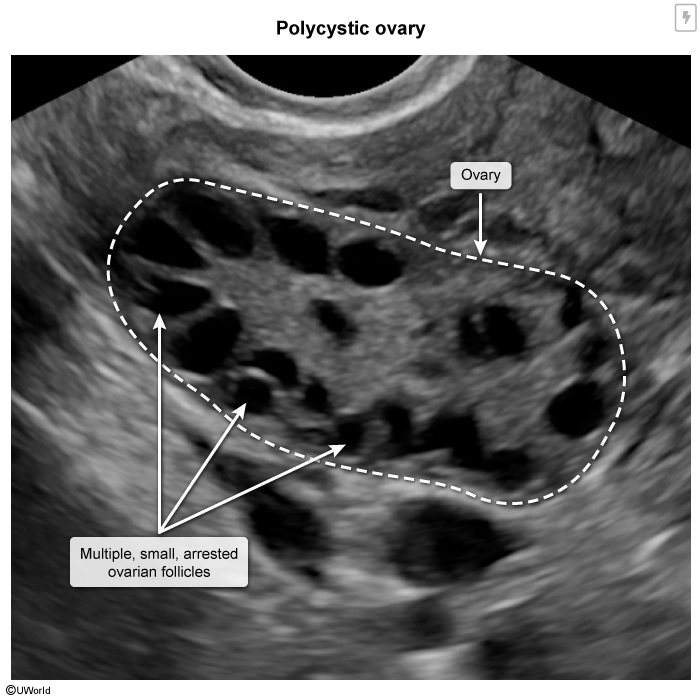Polycystic Ovary Syndrome
Article Sections
Introduction
Polycystic ovary syndrome (PCOS) is a common endocrine disorder affecting up to 10% of reproductive-aged women. It is characterized by the combination of anovulation (eg, abnormal uterine bleeding, infertility), hyperandrogenism, and polycystic ovaries.
Pathogenesis
The etiology of PCOS is heterogeneous and multifactorial (eg, hormonal, genetic, environmental), but patients characteristically have elevated levels of both androgen and estrogen.
Hyperandrogenism, which can be diagnosed clinically (eg, hirsutism, acne) or biochemically (ie, elevated testosterone), occurs due to increased ovarian androgen production. Androgens are then converted to estrogens in the peripheral adipose tissue and ovaries by the enzyme aromatase (Figure 1); patients with PCOS are commonly obese and have increased peripheral and ovarian estrogen production (ie, estrone, estradiol). The consistent elevation in estrogen then acts on the hypothalamic-pituitary-ovarian axis and causes menstrual irregularities and anovulatory infertility.
Continue Learning with UWorld
Get the full Polycystic Ovary Syndrome article plus rich visuals, real-world cases, and in-depth insights from medical experts, all available through the UWorld Medical Library.
Figures
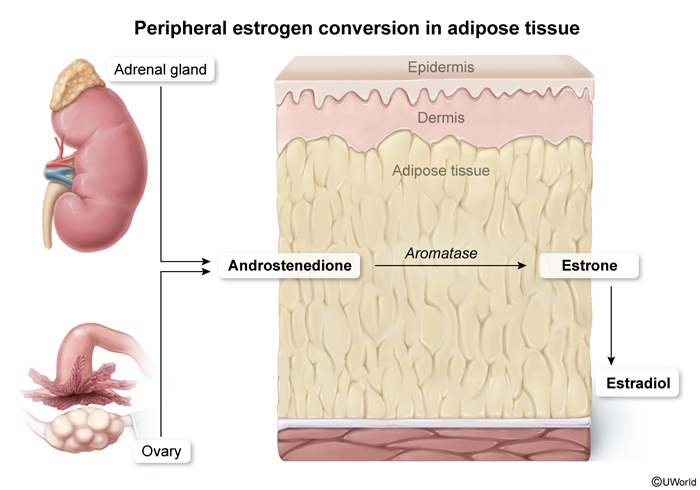
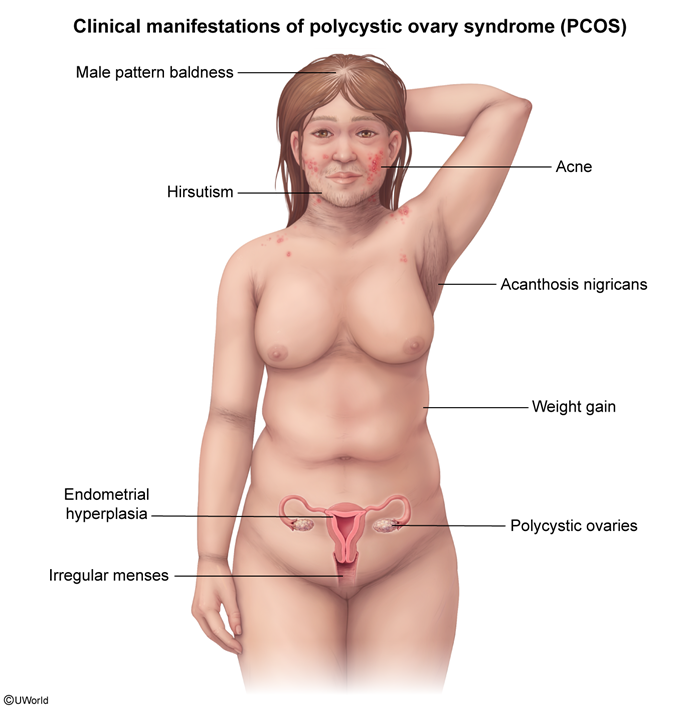
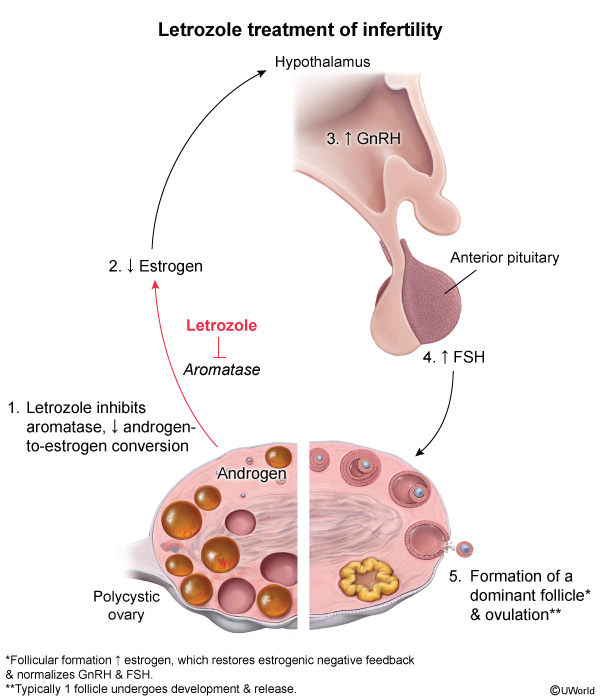
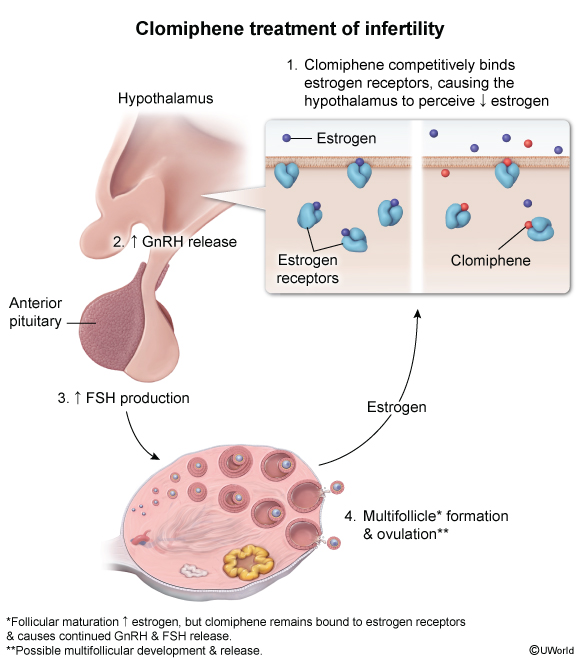
Images
